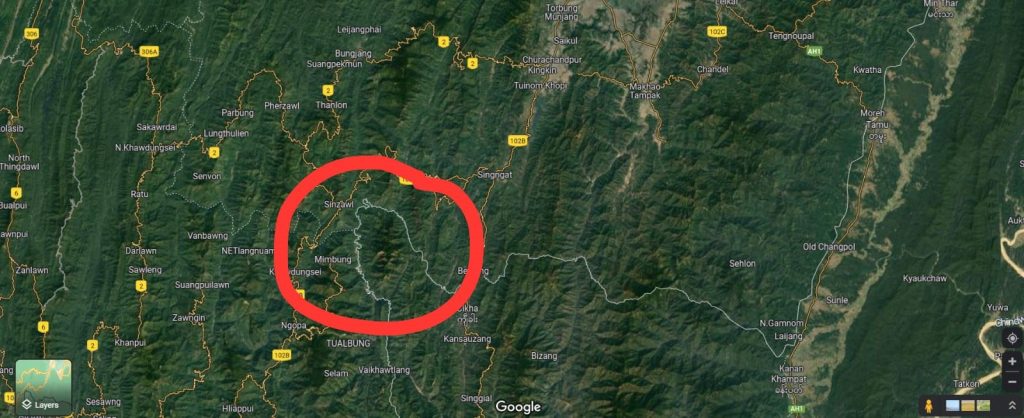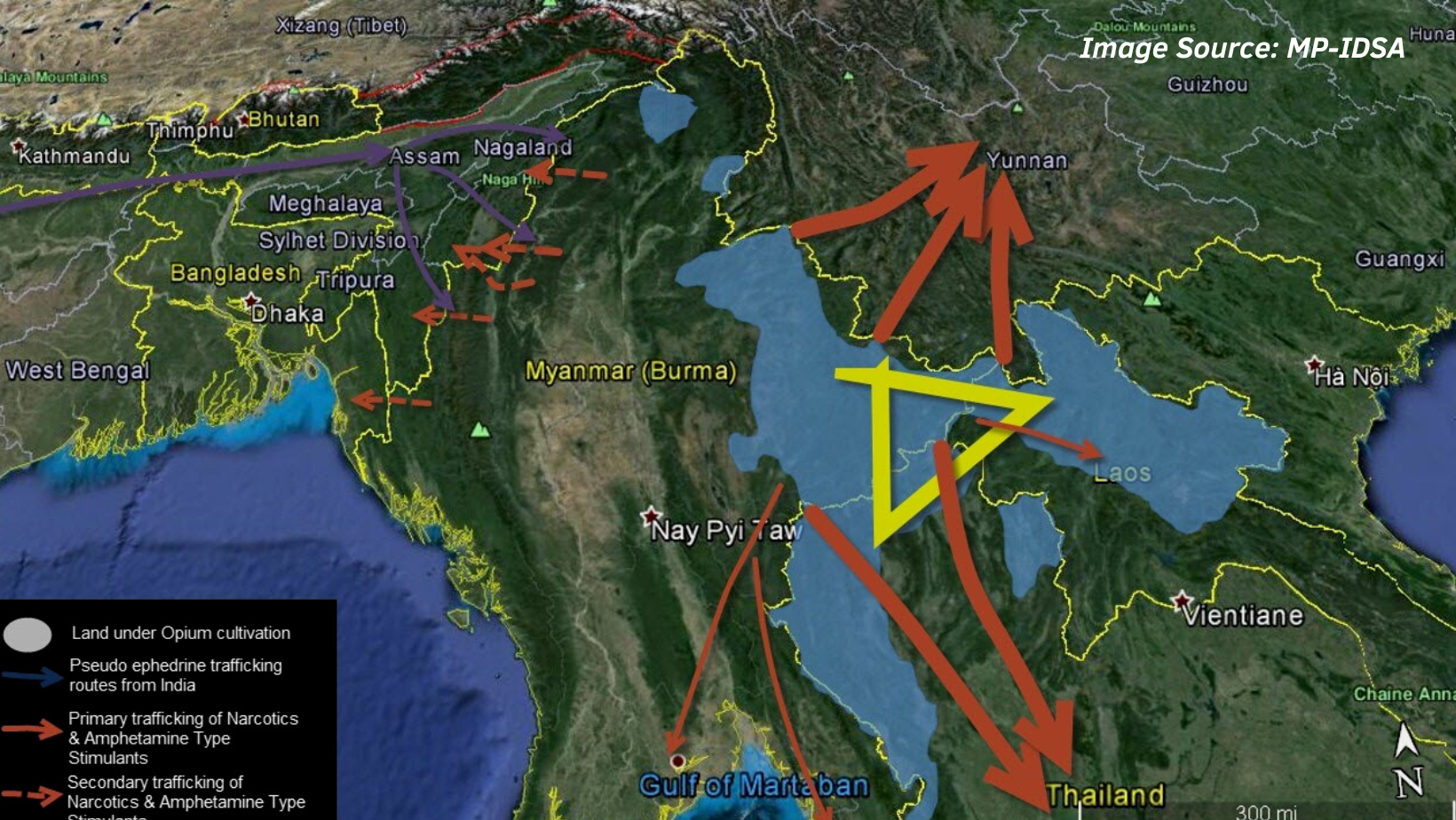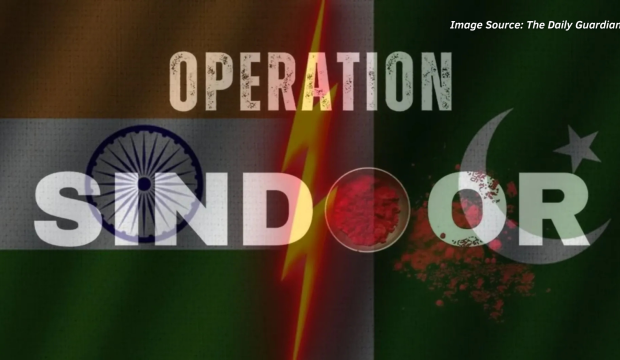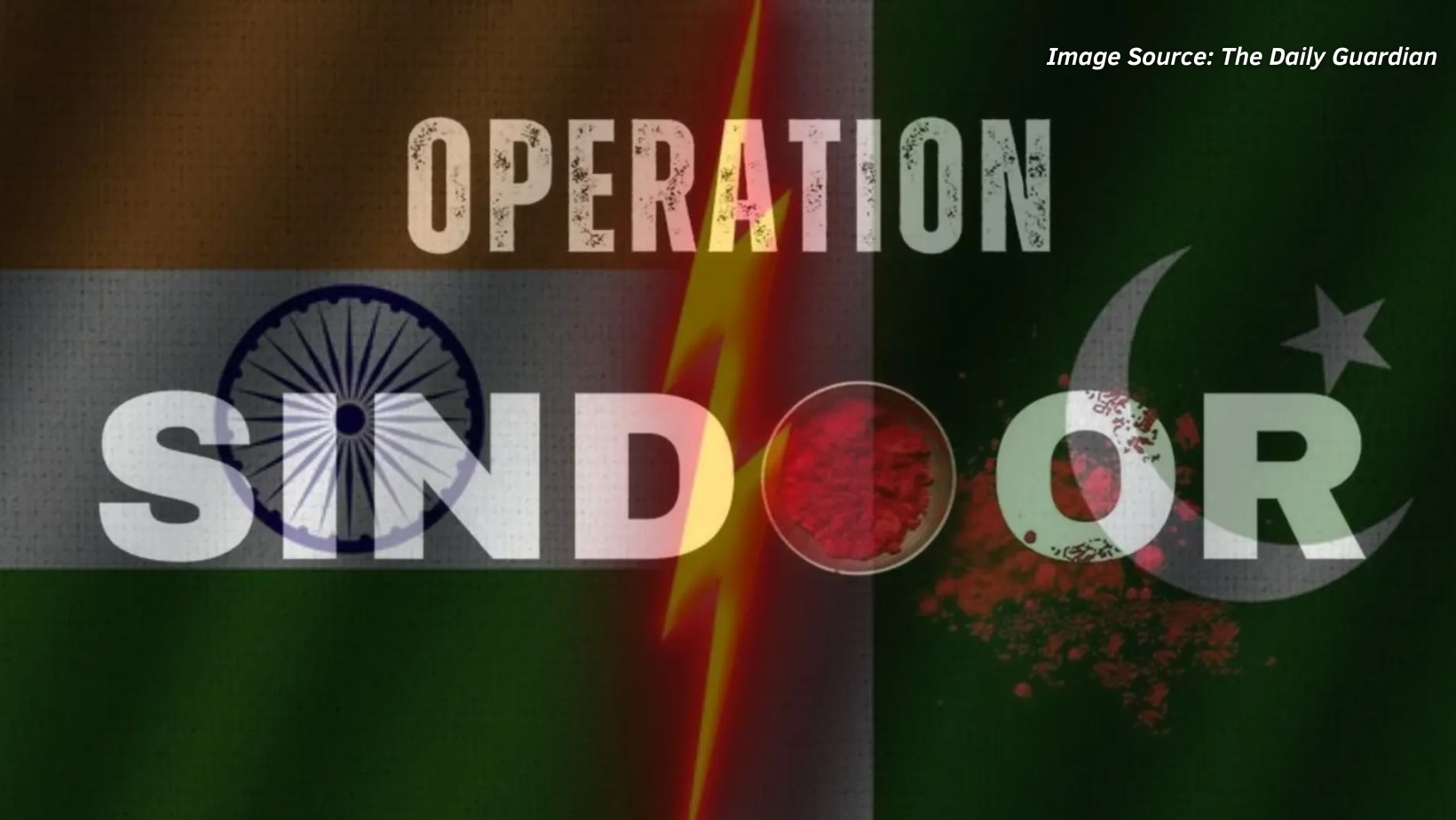Introduction
Myanmar, India’s gateway to Southeast Asia and a State infamous for its notorious drug trafficking poses a serious challenge to India’s national security due to the illicit flow of drugs from Myanmar to the Northeastern states of India. Myanmar is the second largest producer of Opium poppy and the leading manufacturer of synthetic drugs and forms the ‘Golden Triangle’ along with Thailand and Laos. The Indian states of Mizoram, Manipur, Nagaland and Arunachal Pradesh share a porous border with Myanmar that enables drug trafficking in the region. The political instabilities caused by the conflicts between Myanmar’s Army, Tatmadaw and the ethnic militias have become a conducive environment for drug cartels in trafficking narcotics. India has become one of the major markets for these drugs. The study explores the trends in the trafficking of drugs before and after the Myanmar coup of 2021 and further looks into the security challenges faced by India due to these narcotics flows.
Drug Trafficking
Non-traditional security challenges such as transnational organised crimes are taking centre stage in disrupting the peace and harmony of the State, and one of the most prevalent transnational organised crimes that facilitate other crimes is drug trafficking. Even though for a long time Latin American countries have been central in the crimes pertaining to drugs, today, Asian countries, mainly South Asian as well as Southeast Asian countries, with the presence of ‘Golden Crescent’(Afghanistan-Iran-Pakistan) and ‘Golden Triangle’ (Myanmar-Laos-Thailand) are facing serious challenges of the growing drug production and consumption facilitated by geographical factors as well as political instabilities in the region. According to the United Nations Office on Drugs and Crime (UNODC), “drug trafficking is a global illicit trade involving the cultivation, manufacture, distribution, and sale of substances which are subject to drug prohibition laws” (UNODC 2023). The decline in sociocultural, political and economic growth leads to economic instabilities which in turn result in the economically weaker section of the population resorting to illicit economies.
The Flow of Drugs from Myanmar to India
Myanmar and India
To the East, India shares a larger portion of its border with Myanmar, the second-largest producer of opium and a major hub for the production and distribution of synthetic drugs, mainly methamphetamine which is also known as ‘ice’. India and Myanmar share a border close to 1600 kms constituting international boundaries for four northeastern states of India- Mizoram, Nagaland, Manipur and Arunachal Pradesh (MEA 2016). As India is also sharing maritime borders with Myanmar, anything that affects Myanmar will have a spillover effect on the Northeastern states of India especially in the case of drug production. Myanmar has its largest production of opium and other drugs in the Shan State and Kachin state which are also conflict-prone areas. India shares its border with the Kachin state of Myanmar, one of the largest producers of drugs in Myanmar. The border between India and Myanmar is porous in nature which makes the flow of drugs from Myanmar to India feasible. India’s Northeastern states are flooded with drugs coming from Myanmar which also acts as a financial source for the insurgent groups of the Northeast. Both land and maritime fronts are used as routes for trading narcotics.
Major Routes
Myanamar’s drug route ranges through land borders and the Bay of Bengal. Considering the proximity of Myanmar to the Northeastern states of India, the movement of drugs from Myanmar to India is less excruciating. It is estimated that 90% of the smuggling of drugs in India has its origin in Myanmar (Hueiyen News Service 2009), and these drugs not only include opium and heroin but also amphetamine-type stimulants (ATS). The India-Myanmar border in Moreh of Manipur is known to be the major hub of drugs (Sen 2022). Lately, Moreh has been experiencing a range of drug seizures and arrests. Drugs reach Moreh through Myanmar’s Tamu village and then flow to Imphal to Nagaland’s capital Kohima and Dimapur. Another Indo-Myanmar border village New Somtal is used as a route for smuggling to Sugnu and Churachandpur in Manipur to Imphal, Kohima and Dimapur. The two other routes are Kheiman (a village in Myanmar) to Behiyang and then to Imphal and Dimapur (Nagaland), the final known route starting from Somrah (Hueiyen News Service 2009).
Along with trafficking through land borders, Myanmar is also a major maritime transit route in drug trafficking in the Indian Ocean region. The Bay of Bengal neighbourhood is highly susceptible to the narcotics trade and is a booming illicit trade economy in the region. Myanmar is used as a transit route to flood Indian markets with opium and other synthetic drugs. Most drug shipments that come from the East of the Indian Ocean and the Pacific region mainly have Myanmar as their transit route. The drugs that come from Thailand move to Cox Bazar of Bangladesh and then to Myanmar and move to the northeastern states of India (Bhattacharyya & Putz 2019). The Small Arms and Light Weapons (SALW) trafficking route resembles the route of drug trafficking as these are controlled by the same cartels.
Main Actors
The illicit flow of drugs from Myanmar to India has a lot to deal with the major players in the sociopolitical and economic realm of Myanmar. Myanmar is going through a social and political turmoil of coup and the resultant chaos. The ethnic rivalry between the Bamars and ethnic minorities has resulted in political turmoil. The Ethnic Armed Organisations (EAOs) such as Kachin Independence Army (KIA), Arakan Army (AA), and United Wa State Army (UWSA) are some of the major EAOs that are powerful in Myanmar, and the main perpetrators of drug flow to the Indian State. Since Myanmar and the Northeastern states of India share historical and cultural similarities, the brotherhood facilitates the movement of narcotics. Along with Ethnic Armed Organisations (EAOs), Myanmar’s military, Tatmadaw or Junta and People’s Democratic Front (PDF) are part of the drug businesses that are taking place to sustain the money flowing for arms and other necessities. And other sections of people resort to this illicit economy because of the lack of legitimate jobs during the period of political and economic crises, thus resulting in social crisis.
Involvement of other countries
China is reported to be a key player in the flow of drugs to Myanmar. Considering the control of drug flow by China’s crime syndicates, the drugs that enter the Indian markets via Northeastern states have direct or indirect interlinkages with China. China has influence over some of the Ethnic Armed Organisations (EAOs), and being one of the key providers of Myanmar in various other walks of its political sustenance, the government that is in power, democratic or military is found to have allegiance to China. The Wa State in Myanmar has a close connection with the Chinese province of Yunnan given the ethnic similarities between people on both sides (Laang 2022). It is observed that drug networks in South Asia and Southeast Asia are largely controlled by Chinese networks. Even though ISI is suspected to have been part of trafficking in India, considerable evidence is yet to be found.
Myanmar Coup of 2021 as a Variable in the Illicit Flow of Drugs
Myanmar has witnessed intense political conditions in the colonial era as well as in its establishment of an independent state. The fluctuating political system in Myanmar and the dissatisfaction towards the military government, Tatmadaw along with its longstanding conflict between the dominant ethnic community, Bamars and other ethnic minorities are reasons behind the present condition of Myanmar. This instability in the political atmosphere has affected the State’s economy at an alarming decline rate with 40% of its population below the poverty line (World Bank 2022). According to the World Bank Myanmar Economic Monitor Report released in 2022, along with a major population falling below the poverty line, incomes in the household are decreasing, leading to a decrease in the purchasing power of the population directly affecting small businesses thriving on basic amenities supply like groceries (World Bank 2022). Thus, a sharp decline in the social living conditions of the population of Myanmar has led the population to generate livelihood from illicit economies (Sassaroli 2022). Since the cultivation happens in the peripheries of Myanmar such as Shan and Kachin, along with other states, the obvious easy markets for these drugs are the Northeastern states of India. Proving this, there have been multiple seizures of tons of methamphetamines across Manipur and Mizoram.
Before the Coup of 2021
There have been certain patterns in the production and flow of drugs from Myanmar to India. From 2016 to the Myanmar coup of 2021, there is a trend emerging and this trend can also be seen in the consumption in India with the number of seizures recorded. During the period of 2016-2020, even though opium production was stable according to the UNODC reports, the Opium Survey Report of Myanmar observed that there was a decrease in opium production to a figure of 25% decrease. But this decrease does not mean a decrease in the consumption of drugs in the State, but there was an increase in the manufacturing of synthetic drugs that affected the consumption of opium. During the same period, Assam recorded its highest drug smuggling with the lion’s share of the drugs being synthetic drugs illegally supplied from Myanmar (Times of India 2017). Since 2017, the illicit flow of synthetic drugs has been at its high in Assam and other parts of Northeastern India. Comparing the drug production in Myanmar and any Northeastern state, for example, Assam, it can be identified that whenever there was a spike in the production of opium or other drugs in Myanmar, the seizures also increased in the state. During the years 2011-2013, when the production of drugs in Myanmar was high, Assam had a peak in its drug seizure. After 2014, the seizures in Assam declined till 2015 (mainly opium) (Times of India 2017), which can be read in correlation with the Myanmar government’s ban on opium cultivation.
Fig 1: Trend in the use of selected drugs in Myanmar, 2015-2020

(Source: UNODC Report of 2021 on Synthetic Drugs in East Asia and Southeast Asia )
After the Coup
The coup of 2021 has completely devastated the normal life of the population of Myanmar resulting in the population resorting to the trade of drugs illegally. The geography of Myanmar facilitates this easy movement, and the neighbouring states become markets for this. It is not just the porous borders that facilitate this ease of access for Myanmar’s drug cartels to engage with the Northeastern states of India, but also the cultural identity that brings people across borders together. This in turn becomes the support factor for the insurgent groups functioning in India. After the coup, there has been a significant rise in the flow of drugs from Myanmar to India. There have been multiple seizures of drugs, particularly synthetic drugs. Manipur and Mizoram experience greater threats because of the ease of movement facilitated by dense forests and mountains. There are sizeable amounts of drugs that have been seized from both states as the conflict in Myanmar continues. The illegally housed Chin population in Mizoram is assumed to be in links with the drug network that makes the smuggling easier. The increase of 14% in opium production in the Chin state is menacing for India as it shares borders (UNODC 2023). It is also interesting to note that Chin State was never part of the previous Myanmar Opium Surveys as a hotspot which underlines the significance of the increase in opium cultivation here (UNODC 2023). Given below is the figure of the Myanmar-Manipur border which is emerging as an opium cultivation hill that makes the drug trade easier, and the threat increases as the Zomi Revolutionary Army (ZRA), one of the Myanmar rebel groups has influence in the region.
Fig 2: Myanmar-Manipur Border where Opium cultivation is on the rise

(Source: Google Earth View)
It is reported that Heroin seizures increased from 20.36 Kg in 2020 to 34.52 Kg (Indian Express 2022). Police were able to seize 153.77 kg of Methamphetamine tablets (Indian Express 2022). As the conflict in Myanmar continues, the cartels are finding new routes to enter multiple countries and the Northeastern states are becoming a transit route for global illicit trade. The seizure of crystalline methamphetamine or infamously known as ‘Ice’ was transported from Myanmar to Chennai through the northeastern states of India which were meant for other Southeast Asian countries, and these meth tablets were carried in tea bags to avoid suspicions (Prabhakar 2020). Along with drugs, the chemicals required for the production of synthetic drugs are sourced from India and China. India’s growth in the consumption of drugs has strong roots in Myanmar.
Challenges to India’s National Security
As much as the very idea of drugs flowing from Myanmar to India is a greater threat to India’s national security, there are various other security concerns that come along with the increasing drug flow. It challenges human security and social welfare. Most transnational organised crimes are interconnected and happen simultaneously when a drug cartel is functioning in the same region.
One of the immediate threats exposed by drug trafficking is the interlinkage between drug traffickers and insurgent groups. Most of the insurgent groups receive financial assistance from drug cartels that mainly operate outside of the Indian territory. The association of these networks with India’s neighbours can pose serious threats considering the tensions that are growing between India and China. These drugs that flow from external actors to the separatist and secessionist movements negatively catalyse the Indian state. The unstable condition of states that is proximal to states where there is an existent threat from across the border, becomes advantageous for the belligerent. Similar to the association of insurgent groups and drug smuggling, the trafficking of Small Arms and Light Weapons (SALW) also has linkages with the functioning of the illicit drug economy. At times, drugs are used as currencies for the purchase of Small Arms and Light weapons by insurgents or terror groups. Thus, the illicit flow of drugs and small arms are always looked at in tandem with each other. The circulation of Small Arms and Light Weapons (SALW) only increases the intensity of the conflict, and it eventually becomes a protracted conflict. Hence, the flow of drugs to India could mean the possible threat of conflicts. Drug networks are powerful and orchestrate all possible trafficking that aligns with their narcotics trafficking. Human trafficking is one such issue, and with growing drug addiction, it becomes easier to manipulate children. In Mizoram, children are used as drug mules to carry heroin and methamphetamine substances and surveil the Mizoram-Myanmar border (Vanlalruata 2022).
Drug addiction in adolescents and youth challenges the country’s human resources. The socioeconomic conditions and security of a State are threatened by drug abuse. This drug abuse can have generational consequences including physical and mental issues on all genders as well as progenies turning unhealthy with physical and cognitive difficulties. The corridors of Myanmar’s drugs to India- Manipur and Nagaland face a serious health issue of an increase in the number of HIV patients in the region. It is observed that most regular users of drugs in the region have reported HIV AIDS. According to the reports of the United Nations and the Ministry of Family and Welfare, Manipur and Nagaland have HIV active rates above the national average of 0.34%. The statistics of Manipur show that 19.8% of injecting drug users have tested positive for HIV whereas in Nagaland the rate is 16.4% (Albertin 2023)
Drug cartels and dealers often have connections within the political and administrative system that help in working under the radar. Corruption at the border makes the cartel’s access to the drug markets easy. This corruption persists not just only at the grassroots level but also amongst the higher authorities. Local politicians and political parties operating have links with these drug cartels which helps these drug networks get a hold of the administrative system, thereby making it feasible for these networks to make decisions in their favour and also ensure safe havens.
Conclusion
Myanmar being part of one of the notorious drug trafficking centres ‘The Golden Triangle’, and sharing borders with India’s Northeastern states, the trends in drug manufacturing and distribution in the State will have a direct impact on India’s national security. Internal conflicts and political stability in a country lead to the loss of livelihood resulting in people resorting to illegal economies, and in the case of Myanmar, because of the political instability, there was an exponential increase in the production of drugs consisting of Opium and synthetic drugs. One of the major markets for this drug is India which has porous borders that help in the easy movement of drugs from Myanmar to India. The major routes are the Indo-Myanmar border, Moreh in Manipur, New Somtal to Sugnu, Kheiman to Behiang, and finally Somrah. The maritime route consists of Bangladesh’s Cox Bazar and then to Myanmar and finally India. The Ethnic Armed Organisations (EAOs), Junta, and Tatmadaw-backed militias along with the insurgent groups and sympathisers in Northeastern states of India are the main actors in this illicit flow of drugs along with the involvement of Chinese networks. Since the largest production of drugs in Myanmar happens in Shan and Kachin (proximal to Northeast India), and considering the coup had gone severe on these peripheries, there was a sharp increase in the flow of drugs. After analysing the correlation between Myanmar’s drug production and the seizures in India, it can be understood that both are directly proportional, ie, when there was an increase in the production of drugs in Myanmar, the drug seizures in India also increased. The changing patterns of the types of drugs in Myanmar resulted in a pattern change in India as well. After the coup of 2021, there is an evident rise in drug flow from Myanmar to India with tonnes of seizures happening across Manipur and Mizoram. With the Chin population from Myanmar illegally settling in Manipur, the movement of drugs has also become a point of suspicion. There has also been a report of the Manipur-Myanmar border dent turning into opium cultivation hills. Drug abuse that leads to social disruption and destabilisation of the socioeconomic situation of the State, other transnational organised crimes such as SALW trafficking, human trafficking, the spread of HIV AIDS, funding of insurgent groups, their involvement in politics and administration and corruption etc are some of the challenges that affect India’s national security surrounding drug trafficking.
DISCLAIMER
The paper is author’s individual scholastic articulation and does not necessarily reflect the views of CENJOWS. The author certifies that the article is original in content, unpublished and it has not been submitted for publication/ web upload elsewhere and that the facts and figures quoted are duly referenced, as needed and are believed to be correct.
References
- Albertin, Cristina. 2023. “The North East of India: drugs and HIV: trails of tears and hope in a hidden jewellery.” unodc. https://www.unodc.org/southasia/frontpage/2009/September/drugs-and-hiv_-trails-of-tears-and-hope-in-a-hidden-jewelry.html.
- Bhadouria, Shivanshi. 2022. “Emerging Synthetic Drug Market in the Bay of Bengal A Case Study of Amphetamine-Type Substances.” Vivekananda International Foundation. https://www.vifindia.org/article/2022/september/05/Emerging-Synthetic-Drug-Market-in-the-Bay-of-Bengal.
- Bhattacharyya, Rajeev, and Catherine Putz. 2019. “India’s Northeast Emerges as a Drug-Trafficking Corridor Between Myanmar and Bangladesh.” The Diplomat. https://thediplomat.com/2019/05/indias-northeast-emerges-as-a-drug-trafficking-corridor-between-myanmar-and-bangladesh/.
- Hueiyen News Service. 2009. “90% of drugs in India trafficked from Myanmar through Manipur : 01st mar09 ~ E-Pao! Headlines.” E-pao.net. http://e-pao.net/GP.asp?src=14..010309.mar09.
- Indian Express. 2022. “Rise in smuggling activities in Mizoram due to Myanmar crisis: Officials.” The Indian Express. https://indianexpress.com/article/north-east-india/mizoram/rise-in-smuggling-activities-in-mizoram-due-to-myanmar-crisis-officials-8158006/.
- Laang, Khorjei. 2022. “China, India and Manipur: Emerging illegal drugs economy and national security question.” The Frontier Manipur. https://thefrontiermanipur.com/china-india-and-manipur-emerging-illegal-drugs-economy-and-national-security-question/.
- 2016. “India – Myanmar Relations Myanmar shares a long land border of over 1600 Km with India as well as a maritime boundary in the Bay.” Ministry of External Affairs. https://www.mea.gov.in/Portal/ForeignRelation/Myanamr_Feb_2016.pdf.
- Prabhakar, Siddharth. 2020. “Meth makes its way into Chennai in tea bags | Chennai News.” Times of India. https://timesofindia.indiatimes.com/city/chennai/meth-makes-its-way-into-chennai-in-tea-bags/articleshow/76656085.cms.
- Sassaroli, Maria E. 2022. “Drugs flow where the rivers meet: Myanmar’s drug economy before and after the coup | T.wai.” Torino World Affairs Institute. https://www.twai.it/articles/myanmars-drug-economy-before-after-coup/.
- Sen, Sourabh. 2022. “How Moreh became one of India’s biggest drug hubs | India News.” Times of India. https://timesofindia.indiatimes.com/india/why-indias-gateway-to-east-asia-is-emerging-as-a-drugs-haven/articleshow/90705491.cms.
- 2022. “World Drug Report 2022 [Drug Market Trends Cocaine Amphetamine type- Stimulants New Psychoactive Substances].” United Nations Office on Drugs and Crimes. https://www.unodc.org/res/wdr2022/MS/WDR22_Booklet_4.pdf.
- 2023. “Drug trafficking.” United Nations Office on Drugs and Crime. https://www.unodc.org/unodc/en/drug-trafficking/index.html.
- 2023. “Myanmar.” United Nations Office on Drugs and Crime. https://www.unodc.org/unodc/en/alternative-development/myanmar.html.
- 2023. “Myanmar Opium Survey 2022: Cultivation, Production and Implications.” United Nations Office on Drugs and Crime. https://www.unodc.org/roseap/uploads/documents/Publications/2023/Myanmar_Opium_Survey_2022.pdf.
- Vanlalruata, H. C. 2022. “Relatives using children as drug mules in Mizoram, say officials | Guwahati News.” Times of India. https://timesofindia.indiatimes.com/city/guwahati/relatives-using-children-as-drug-mules-in-mizoram-say-officials/articleshow/93725117.cms.
- World Bank. 2022. “Myanmar economy remains fragile, with reform reversals weakening the outlook.” World Bank. https://www.worldbank.org/en/news/press-release/2022/07/21/myanmar-economy-remains-fragile-with-reform-reversals-further-weakening-the-outlook.








































